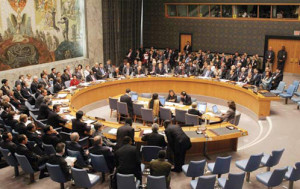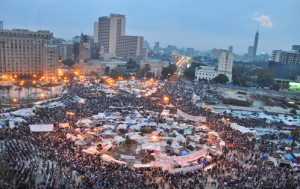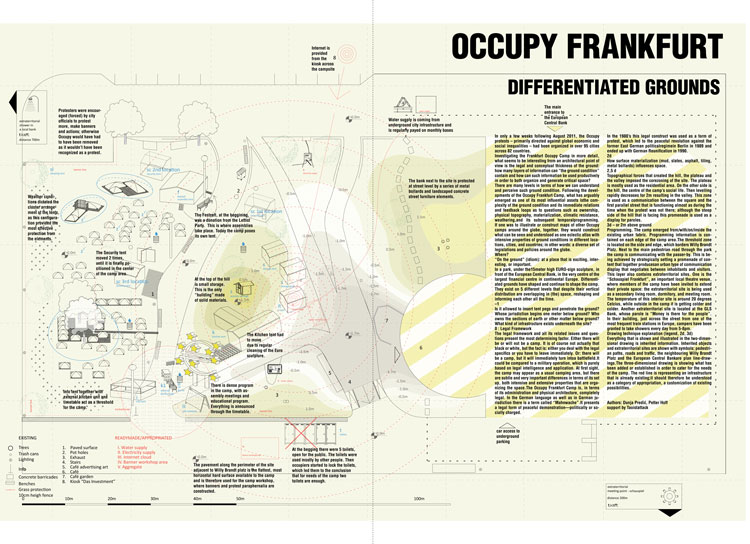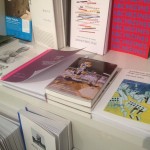News
2013/02/18
SUNDAY SESSIONS hosted by Nikolaus Hirsch & Markus Miessen in collaboration with PIN-UP magazine
2013/02/07
STEALTH ARCHITECTURE
opening 7th February 2013, 7 pm at
Green Room, Schaumainkai 37 in Frankfurt/Main
Konzipiert von Markus Miessen, Gastprofessor für Architecture & Critical Spatial Practice, Städelschule. Mit Iva Baljkas, Christoph Esser, Matthias Görlich, Flaka Haliti, Armin Linke und Joel Roy.
Eröffnung während des Rundgangs der Städelschule.
Eine Kooperation des Weltkulturen Museums und der Städelschule für Theatrum Mundi/Global Street.
2013/02/04
Critical Spatial Practice (edition 1) at the Serpentine Gallery book store. 3rd edition now in production… pic.twitter.com/4jSmxPVv
Architecture + Critical Spatial Practice

United Nations, New York City
(source: www.guardian.co.uk)
Städelschule Architecture Class’ (SAC) new specialisation in Architecture and Critical Spatial Practice (ACSP) navigates architecture as a critical spatial, political, cultural, and social tool taking full advantage of SAC’s position within the Städelschule. It draws on the playful and culturally discursive potential of the relationship between architecture and related disciplines, first and foremost art, to reinvigorate architecture with cultural, social and political criticism. It will establish a productive dialogue with the other half of the Städelschule benefiting from the friction that intrinsically exists between art and architecture. ACSP gains from cross-disciplinary fertilisation through intensive collaboration with Städelschule’s art department and a vital interaction of the student bodies.
In its approach to various contemporary topics, ACSP sees SAC’s presence in the Städelschule as a privileged position since one aspect of contemporary production in the arts is precisely to pose inquiries along the lines of how critical practices operate. In this context, architecture holds a particular promise since its relationship to spatial domains is inherent to its history and contemporary status. However, much contemporary production in architecture is void of its responsibilities in these terms and unaware of its consequences. ACSP aims to provide a much needed re-injection of a vital, critical discourse to the field.
Can social complexity, antagonistic encounter, and critical content exchange be designed? What constitutes the productive transitions of physical scales and programmatic (in-)formalities when it comes to political encounters? When we stage discourse, when and how does the political emerge?
Critical Spatial Practice should be understood as a means of rethinking one’s professional practice, operation, and codes of conduct. Consequently, the singular formal and often self-referential approach of architecture is being enhanced by a complex field of interests, methods and lines of attack. These utilize a set of specific tools at various scales in order to deal with a situation at hand in the most productive yet critical manner and set up critical ‘problematics’.

‘Hier Entsteht’ credits: Jesko Fezer and Mathias Heyden, Berlin

Tahrir Square, Cairo
(source: Wikipedia)
Architectural history has been dominated by publications as a site and test-ground for ideas: at some point, paper was the most radical architectural material of all. Architecture has a very specific history embedded in the production and dissemination of discursive platforms such as books, magazines and self-published fanzines.
ACSP understands itself at the intersection of publishing as distribution of ideas – the production of a pro-active and self-initiated (public) debate as a test-site for spatial speculation. Students will be directly involved in the formulation of questions, outlining of possible inquiries, researching and mapping those territories of concern, distributing ideas and content as a proposition: an active involvement in the world surrounding them.
Within Critical Spatial Practice, the question of feedback is crucial. Its pursuits no longer hinges on the belief in individual artistic production, but heavily depends on often conflictual exchange with likeminded practitioners, collaborators, as well as potential adversaries. Publishing will become a central tool for students to think their projects through a common format, which will help them to address their concerns to a specific, developed and predefined audience. Within this format, students will develop their individual or group projects that form part of a larger yearlong trajectory. Consequently, student work will focus not on a ‘final design’, but an inquiry and documentation of an experiment, a discursively argued thesis towards a ‘spatial condition.’ This condition may result in an architectural scale proposal, a social event, a policy document, an analysis of spatial typologies, or a critical documentation of an existing situation.
ACSP will think about ‘space’ without necessarily intervening in it physically, but trying to sensitise, promote, develop and foster an attitude towards contemporary spatial production, its triggers, driving forces, effects and affects. As a group, we will speculate on the modalities of production and potential benefits of the role of ‘the outsider.’
The setting up of such scaffold and borderlines is important as each individual contributor to the project needs to take a position, which always has consequences. Only when a border is acknowledged, understood and recognised it can be broken, transgressed or (mis)used. By deliberately producing such antagonistic fields of productive encounters, ACSP nurtures and exploits misunderstandings and a pro-active outlook on the value of failure as the starting point of all experimentation. An annual thematic umbrella formulates the subject of our investigation. This central narrative acts as a test ground on which individuals and groups can experiment.
Cultures Of Assembly
(Political Space and Agonistic Encounter)
This coming year, ACSP will inquire the complex narratives around political congregation. What constitutes the space for/of politics? This yearlong project will investigate how to imagine, devise and design a space of politics, both through content-related curatorial questions as well as its potential physical counterpart, differentiating between that which is politics and that which is the political. Small groups of students will work on thematic sub-clusters dealing with the question of how political congregation and struggle has been and is currently being staged, consciously or not, and how alternatives to those models could be developed.

Parliamentary chambers, by Ana Filipovic, 2012
Using the productive conflict between consensual versus dissensual modes of practice as a driving force to develop individual projects, we will think both through the terms of ‘curating content’ and ‘staging conflict’ in order to develop tools that help us define socio-spatial frameworks that can be tested against reality – ranging from transient and informal to highly structured and formal. These changes in scale (physical) and intention (in/formalities) will produce a fertile ground for speculation: if, sometimes, physical space (design) does not matter, what constitutes the elementary components of a political and/or social forum?
Students will develop a set of comparative critical studies, mappings and individual projects around the notion of congregational zones and territories as well as the social and spatial dynamics of institutions versus transitory settings of debate. Does decision-making take place only within the designed rigidity of the courtroom and parliament or does it emerge in the informal corner of the corridor, between meetings, with a coffee and a cigarette? And if so, how can such processes or spaces be addressed through design?

Occupy Frankfurt – Differentiated grounds, by Dunja Predic and Petter Hoff, 2012
Each year, the Class will conduct a content/theme-specific international research trip. In this new setting of ACSP, the Winter School Middle East operates as a strategic link between the Städelschule and outside activities and projects.
Stealth Architecture
Historically, Frankfurt is home to the “Messe Frankfurt”, one of the largest trade fairs in the world, which – in its current legal and operational framework – was established in 1907. However, the actual trade fair dates back to 1152, when Frankfurt was first mentioned as a major port for international trade. One of the central advantages of Frankfurt as a historically interregional and later global city is owed to its highly convenient geopolitical location: next to or close to two major rivers (Main and Rhein), and well connected to major pan-European trade routes and road networks. Today, Frankfurt hosts the ninth busiest airport globally, and is home to the Lufthansa fleet. In 1785 the first recorded manned flight in Germany took place in Frankfurt when a hydrogen-balloon was launched as part of the trade fair. Lufthansa was founded two years after the Messe Frankfurt.
Hidden Infrastructures:
the enabling space for trade
Since Frankfurt is such an important centre for trade, it bursts with two very different sets of infrastructure: at first, it necessitates a formal infrastructure, which supports, benefits from, and enables official trade. Examples include the trade fair, the stock exchange, the European Central Bank, all major international banks, the airport, the train station, the motorways, business centres, and hotels.
Further, the above phenomenon produces a fertile ground for alternative forms of markets and trade, but also relies on a second-layer infrastructure, which allows for a trade-capital to operate on a daily basis, an infrastructure, which is often not visible and may not have a clearly recognizable and specifically designed facade or face to it. Examples of this phenomenon include Internet service hubs, server warehouses, the Commerzbank trading floor (Bahnhofsviertel), the largest Internet hub in the world (De-Cix Management GmbH, Ostend & Gallus), Central Data Centres (i.e. on Hanauer Landstrasse & Kleyerstrasse), Deutsche Börse Rechenzentrum Eschborn, call centres, (unofficial) detention centres, informal sex work, sterile environments, and second layer markets.
Framework
As part of the larger project Theatrum Mundi/Global Street, this yearlong research project at the Städelschule investigates the question and phenomenon of (informal) trade, spaces of infrastructure, and – more specifically – practices and buildings without a Face/ade. Theatrum Mundi/Global Street is a project that aims to bring architects, urban planners, and visual artists together in order to re-imagine questions of the public, publicness, and everyday street culture of 21st century cities. In New York, Theatrum Mundi is working on questions of choreography and public speaking, while the London group is working on questions of space, sound and light, the Städelschule Architecture Class (SAC) project will investigate the urban reality and potentials of exchange and trade, as well as the objects and spaces that these elements produce, both in relation to the city and to its spatial setting: meeting points, public and otherwise, in the shadow, so to speak.
As a starting point, the group will inquire questions of trade and how those practices spatialize within urban environments: what determines those processes, how are they ‘designed’, and at which moment do they become ‘architectural’?
Attempting to map and visualize the invisible, the studio will start by studying spatial histories of global trade on a local scale. We will use the city of Frankfurt as a central European case that exemplifies how material and immaterial goods are being circulated, ranging from formal to informal, from financial transactions to passenger flows and the urban infrastructure of physical products, from migrant communities (geo-political background) to the Elderly (age), from illegal practices to forms and formats of night labour, from spaces of financial infrastructure and information flows to control rooms, where decisions are being made. The fact that many of those practices are taking place as often unwanted but tolerated invisible practices also points at the question of what kind of urban culture is being promoted today.
While focusing on the local, Frankfurt – as an international city – by default reveals global implications and therefore the project will attempt to unpack relevant questions of geopolitics. As the studio will deal with the question of the invisible, one of the aims of this ‘de-stealthing’ project will be to x-ray the city that we inhabit, to ‘make presence’ (Saskia Sassen): from informal trade to histories of hidden spaces, from programs without facade to faceless buildings – architectural scale projects that disappear in the city’s fabric.
Dealing with such questions of trade and urban practices ‘below the radar’ (Saskia Sassen) will also entail to study, understand, and speculate on the constructions of identities and communities in the contemporary city. To speculate on this further raises the question of ‘urban capabilities’ (Saskia Sassen), in other words: why does a particular city lend itself to a specific, localized and customized set of practices?
In the context of this project, the notion of exchange and trade will be interpreted and tested as ‘soft encounters’ (Siobhan Davis), everyday practices that embody and reveal different notions of presence, awareness and perception. While some phenomena that we will investigate may take place in physically remote neighbourhoods and sites within the urban environment, others may claim and occupy spaces, which change on a 24hr timetable: activities that only take place after sunset (specific kinds of markets, sexual services, gambling, drug trading et al.), activities that illustrate the relationship between practices that ‘contaminate and decontaminate’ (Saskia Sassen), being open and accessible at times and hermetic at other times. When they accumulate they generate a rupture in the often-homogeneous daily life of the city.
These ruptures produced by the invisible are based on a very specific and alternative interpretation and practice of ownership: one, which tends to often not be based on legal, but temporary ownership, in other words: presence as a result of occupation, creating presence not by “owning” (a specific section of) the public space, but producing presence by inhabiting. What constitutes the thresholds and borders of such practices and architecture? What would such space look like today?
This endeavour should entail site-specific and research-based investigations and projects. In the Weltkulturen Museum we have, for instance, organized research-based sessions, workshops and displays open to the public, where we take various and specifically scouted and produced mappings and objects as triggers for an understanding of trade & presence, in particular an urban political presence. The Weltkulturen Museum will dedicate several exhibitions and events to the overall theme of “Trading Perceptions” over the following years. The diverse relationships that determine the ways in which artefacts have been circulated and traded, the connections of the museum to global commerce and to changing political and economic incentives are all aspects of the inquiry.
Green Room
The Green Room on the upper floor of the Weltkulturen Museum in Frankfurt is a laboratory space, which has been explored as a temporary production-in-residence in which the team has worked on an installation and display of process(es). The studio has been invited by the museum to undertake research in this laboratory-like condition, formulating new interpretations and creating original artworks based on the findings, superimposition and conflicts generated by the contemporary condition of Frankfurt (our findings) and the historic depth of the museum’s existing and outstanding collection. The space has been used as an archive of mapping and research work on stealth spaces and objects relating to formal and informal modes of trade, based on our ongoing investigation in the city of Frankfurt. In order to enhance the historic contextualization of the project, we have also worked with architectural photographs from the image archive as well as with selected architectural artifacts and objects of the collection of the Weltkulturen Museum.
Publications

The Space of Agonism
Markus Miessen, Chantal Mouffe
Critical Spatial Practice 2
Sternberg-Press, 2012
Edited by Nikolaus Hirsch and Markus Miessen
Including an artist project by Rabih Mroué
The second volume in the Critical Spatial Practice series presents a selection of conversations between Markus Miessen and political philosopher Chantal Mouffe. Taking place intermittently between December 2006 and October 2011, the dialogues attempt to unpack current dilemmas and popular mobilizations in terms of consensus-driven formats of political decision making. The conversations were alternately driven by Miessen’s specific concerns regarding his ongoing investigation into conflict-based forms of participation as an alternative (spatial) practice in democratic systems, and Mouffe’s understanding and theory of a “conflictual consensus.” Thinking in terms of agonism and “demoicracy”—a union that acknowledges the plurality and permanence of its different populations—the book proposes new approaches to countering and responding to the globalizing thrust of neoliberalism.
Design by Zak Group
November 2012, English
10.5 x 15 cm, 148 pages, 23 color ills., softcover with dust jacket
ISBN 978-3-943365-41-2
€15.00

What Is Critical Spatial Practice?
Nikolaus Hirsch, Markus Miessen (Eds.)
Critical Spatial Practice 1
Sternberg-Press, 2012
In September 2011, Nikolaus Hirsch and Markus Miessen invited protagonists from the fields of architecture, art, philosophy, and literature to reflect on the single question of what, today, can be understood as a critical modality of spatial practice. Most of the sixty-four contributions presented in this volume were composed concurrently with the evictions of many of the Occupy movements, sustained turmoil in countries of the Arab Spring, and continued spasms in the global financial system, which, interestingly, all pointed at the question and problematic of whether architecture and our physical environment can still be understood as a res publica. A response by the editors takes the form of a conversation.
This book is first in a series on critical spatial practice developed alongside the Städelschule program of the same name. Each edition includes work by invited artists—the first includes newly commissioned work by the photographer Armin Linke, who documented the Occupy camp around the European Central Bank in Frankfurt.
Design by Zak Group
September 2012, English
12 x 16.5 cm, 240 pages, 8 color ill., softcover
ISBN 978-3-943365-27-6
€15.00

Architecture+Critical Spatial Practice, 2012
CULTURES OF ASSEMBLY
Design by Studio Matthias Görlich
(Matthias Görlich, Charalampos Lazos)
Download PDF:
Cultures Of Assembly, Newspaper, 2012 [8.8 MB]

Architecture+Critical Spatial Practice, 2013
STEALTH ARCHITECTURE
Design by Studio Matthias Görlich
(Matthias Görlich, Charalampos Lazos)
Download PDF:
Stealth Architecture, Newspaper, 2013 [8.2 MB]
Team
Markus Miessen
Guest Professor, ACSP Städelschule;
architect and writer, director Studio Miessen, Berlin.
Nikolaus Hirsch
Professor, director Städelschule and co-editor, Critical Spatial Practice book series
Matthias Görlich
Designer and Consultant, ACSP and CSP website
Zak Kyes
Designer, Critical Spatial Practice book series
Caroline Schneider
publisher CSP book series, Sternberg Press
Johan Bettum
Professor, Program Director, Städelschule Architecture Class (SAC)
Ben van Berkel
Professor, Dean, Städelschule Architecture Class (SAC)
Researchers:
Ana Filipovic, Dunja Predic, Petter Hoff, Phillip Zach, Elif Erkan, Iva Baljkas, Joel Roy, Flaka Haliti, and Christoph Esser.
Guest Critics:
Nikolaus Hirsch, Matthias Görlich, Mirco Becker, Beatriz Colomina, Joseph Grima, Federica Bueti, Armin Linke, Dr. Clémentine Deliss, Dr. Yvette Mutumba, Diogo Pereira, Yulia Startsev, and Zak Kyes.
Acknowledgements:
Nikolaus Hirsch, Dr. Clémentine Deliss, Dr. Yvette Mutumba, Caroline Schneider, Tatjana Günthner, Matthias Görlich, Charalampos Lazos, Patricia Reed, Zak Kyes, Gregory Ambos, Armin Linke, Jonas Leihener, and all contributors to the Critical Spatial Practice project.
Imprint + Legal Information
© Critical Spatial Practice, Markus Miessen (www.studiomiessen.com).
All rights reserved, including the right of reproduction in whole or in part in any form.
Critical Spatial Practice is currently hosted by:
Staatliche Hochschule für Bildende Künste
–
Städelschule, Dürerstraße 10,
60596 Frankfurt am Main, Germany
www.staedelschule.de
Email: miessen@studiomiessen.com
Website: www.criticalspatialpractice.org
Design:
Studio Matthias Görlich, Darmstadt
www.mgoerlich.com
Programming:
Florian Schunck
www.snck.biz
Legal Information
Critical Spatial Practice accepts no liability for the correctness or completeness of any information contained in this website. The contents are subject to change; errors excepted.
The entire content of the website as well as their graphic and conceptual presentation are subject to the copyright of the respective author and may not be reproduced or used without the express written permission of the latter. We furthermore explicitly oppose the use of all E-Mail addresses published on this website for the purpose of sending unsolicited advertisements by E-Mail (so-called ‘Spam’). References to other websites, web pages or electronic documents (hyperlinks) do not represent any appropriation of the contents of those sites, pages or documents as defined by law. The authors of the HTML documents referred to by this website are solely responsible for the contents of the respective documents. No personal data transmitted to us by way of this website will be forwarded to any third party.
